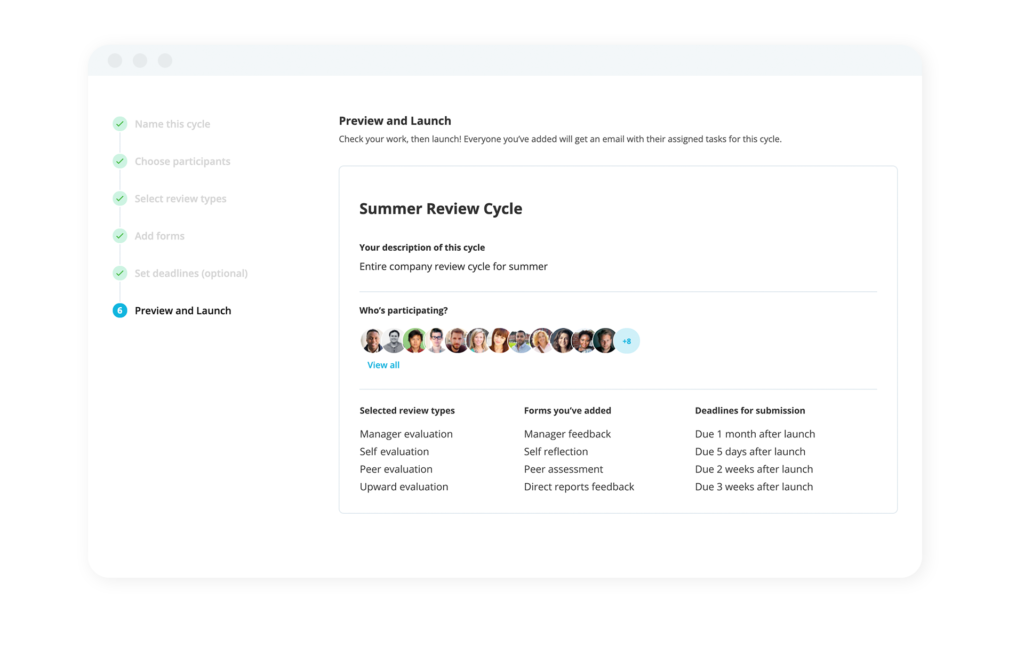Teamwork in the Workplace

Let’s talk about the critical role of teamwork in the workplace. In this article, we’ll explain what it is, why it’s essential, its advantages and disadvantages and conclude with answers to frequently asked questions about teamwork.
Key Facts
Teamwork in the workplace encourages new ideas, fosters a feeling of camaraderie and helps boosts overall productivity.
Communication is the backbone of teamwork in the workplace. It is essential to facilitating discussions, identifying roles and bringing new employees into the fold.
Teamwork in the workplaces requires critical thinking listening skills.
Contents
- 1What Is Teamwork in the Workplace?
- 2Importance of Teamwork in an Organisation
- 3Advantages and Disadvantages of Teamwork in the Workplace
- 4What Does Successful Teamwork Look Like?
- 5What Are the Necessary Skills for Teamwork?
- 6How To Promote Teamwork in an Organisation
- 7Frequently Asked Questions About Teamwork
- 8Building Teamwork in the Workplace
What Is Teamwork in the Workplace?
Teamwork in the workplace is when employees collaborate to accomplish a shared objective. Collaboration of this kind can be accomplished within the same department or across departments as part of a larger organisation.
Importance of Teamwork in an Organisation
Teamwork is important for several reasons. Since most businesses accomplish key objectives by involving different professionals, everyone in an organisation has to understand how to work together and communicate. Teamwork can:
Create more innovative ideas and solutions, due to the diversity of thought.
Reduce the chances of people feeling overwhelmed, since responsibilities are shared.
Help make people feel like they are part of something bigger than themselves, providing a greater sense of purpose at work.
Advantages and Disadvantages of Teamwork in the Workplace
The Top Benefits of Teamwork
Research has shown that teamwork in the workplace brings numerous benefits:
It leads to improved productivity. Since teamwork can make processes smoother, there’s an increased chance of hitting deadlines on time or even early. This sense of accomplishing more, with less stress, can be a motivating force for employees. And even if a project is difficult, people can feel more inclined to stick with something even if it’s a bit challenging because they feel the support of their teammates.
It results in better conflict resolution. Communication is a critical leadership behaviour for organisations, and effective teamwork can lead to improved communication skills since employees get to practise expressing their needs to accomplish tasks. This improved communication can help with conflict resolution because co-workers are already used to speaking respectfully with one another.
It allows for a dynamic team. When a team gets to know one another, they can better understand each other's strengths and weaknesses. This leads to a more dynamic team where the group as a whole is growing and engaging. This is a huge benefit for an organisation because growth leads to progress and innovation, the backbones of a successful business.
It improves problem solving. Teamwork increases the number of eyes on a project, so others can catch what someone else may miss. A study published by the Journal of Personality and Social Psychology found that larger groups of four or five people had a better performance on complex problem solving than individuals.
It lets people think big. With this feeling of collaboration and achievement of goals, teams are encouraged to strive for more accomplishments. So managers can set bigger goals for their team and be able to better play off of everyone’s strengths. This also creates an environment that’s challenging and always moving forward.
The Drawbacks of Teamwork
Some drawbacks of teamwork in the workplace include:
Room for too many opinions. Even though multiple perspectives can make a big difference in a team, too many opinions can overcrowd the discussion if not managed properly. A study published in the journal Nature found that more innovative ideas come from smaller teams.
An employee might enjoy working alone. There’s always a chance that someone doesn’t work well in a group setting. If this is the case, asking them to collaborate on every project might not yield the best results. Be mindful of team members’ working styles; there might still be times when teamwork is needed, but it doesn’t have to be all the time.
Someone may not pull their weight. Teamwork works when everyone pitches in. But even when work is distributed evenly throughout the team, there’s the potential for an imbalance. Read our guide to employee productivity for tips on encouraging employees to participate in the teamwork process.
Differences in personalities. While having different people and perspectives on a team is key to good teamwork, sometimes people may not get along. These conflicts can hinder progress and can lessen the motivation to keep going if two people just don’t see eye to eye.
Accountability. When a team wins, everyone wants to be a part of that victory. But if something goes awry, it may be more difficult for someone to step up and take responsibility.
Give Potential Room To Grow With Personio

Automate your performance cycles to open up time for job enrichment with Personio today.
Find Out More
What Does Successful Teamwork Look Like?
Identifying successful teamwork comes down to a few factors you can observe when your team works together. Here are the key characteristics of what successful teamwork looks like in the workplace:
Type of leadership. You can spot effective examples of teamwork based on management or leadership style. Successful leadership prioritises decision-making that takes all parties into account and communicates with everyone on the team. This is why it’s important to include managers when conducting a skill audit – they can help assess an employee’s leadership capabilities that shape their role in teamwork.
Openness in contributing. A team demonstrates good teamwork if it’s evident that people speak freely and take others’ opinions into account while thinking critically about the task at hand. If it’s clear that everyone feels confident in sharing their opinions – and in turn, the rest of the team is respectful of their ideas – then this is a sign of effective teamwork.
People give feedback. If respectful and constructive criticism or feedback is shared often, then this also points to successful teamwork. This is part of the openness that’s integral to collaboration and which, most importantly, makes employees feel safe and confident at work.
Mistakes happen, but they aren’t the end of the world. If mistakes don’t lead to shame or a disproportionate reaction, then this is an example of teamwork that promotes growth. A successful team understands that mistakes happen, and the leaders view mistakes as a learning opportunity and teachable moment. This leads to growth and a team that keeps evolving.
Patience is needed in teaching and training. Take note of this skill when a team member is training a newcomer or helping another teammate to learn a new skill. It can take time for someone to understand something new, so patience is a part of communicating effectively and working well together.
What Are the Necessary Skills for Teamwork?
The necessary teamwork skills are communication, time management, critical thinking, listening to others, willingness to work together and learn something new and knowing when to lead and when to follow. Teamwork is a balancing act of sharing your perspective and actively listening to your teammates, so you can all come together to accomplish a common goal.
How To Identify Teamwork Skills in an Interview
It’s important to ask questions during a job interview with potential employees to see if they work well in a team setting. Examples of teamwork interview questions include:
What’s your ideal way of tackling a project that needs multiple people involved for it to succeed?
How would you handle it if two people on a project disagreed?
Have you worked on a project that didn’t go as planned? If so, please explain what happened and what you took away from the project.
How would you react to constructive feedback?
How would you try to engage a team member who seems disinterested in the project?
How would you react if an idea you shared with the team was not used in the project?
How would you go about explaining something that you’re well versed in to a teammate that could use a little help?
How To Promote Teamwork in an Organisation
As a leader, here’s how to promote teamwork at your workplace:
Acknowledge and congratulate someone when they do something well.
Ask team members about their perspectives on teamwork and incorporate their feedback.
Work on your own communication skills.
Discover each team member’s strengths to ensure everyone is included and brings their best self to the team.
Frequently Asked Questions About Teamwork
What Are the Qualities of Good Teamwork?
To have good teamwork, you need communication, critical thinking abilities, active listening skills and a few more qualities that we cover in the section “What Are the Necessary Skills for Teamwork?”
What Are 5 Examples of Teamwork?
Here are five teamwork examples to try in the workplace:
Gather the team for a scheduled brainstorming session on a new assignment.
Approach someone with feedback with compassion and in a way that isn’t personal and doesn’t put them down.
Strike up a casual conversation with a team member and share a few laughs to help build camaraderie.
Ask team members for their opinions on something you’re struggling with.
Have regular check-ins with team members to see what’s working and where collaboration could use improvement.
Building Teamwork in the Workplace
Teamwork can increase a team’s productivity and keep everyone inspired as they work towards a common goal. Personio makes it easier to automate best practices for teamwork by managing employee information, progress and performance. Book your free demo to learn how Personio can help you manage everything from one place.
Disclaimer
We would like to inform you that the contents of our website (including any legal contributions) are for non-binding informational purposes only and does not in any way constitute legal advice. The content of this information cannot and is not intended to replace individual and binding legal advice from e.g. a lawyer that addresses your specific situation. In this respect, all information provided is without guarantee of correctness, completeness and up-to-dateness.
